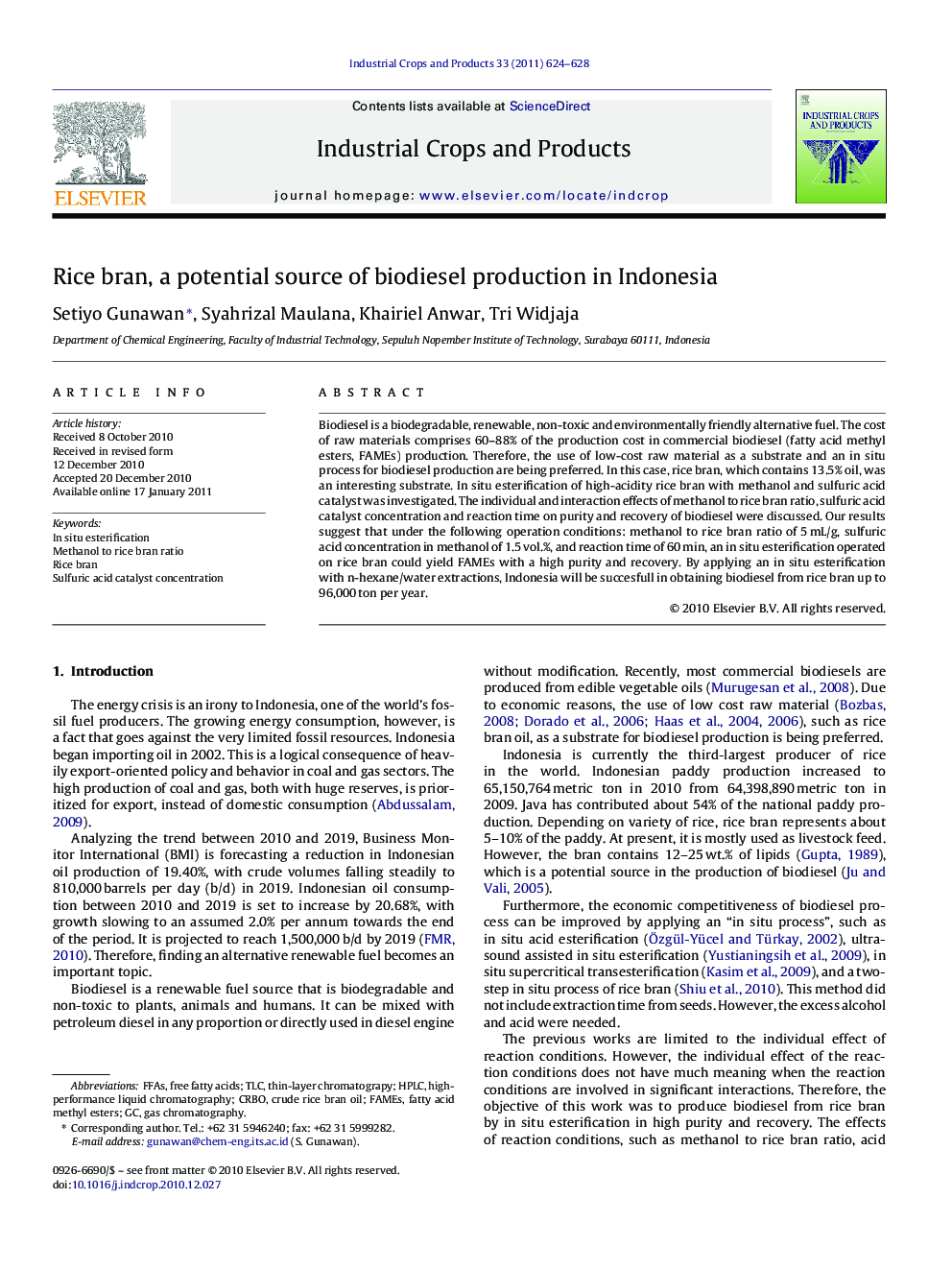| Article ID | Journal | Published Year | Pages | File Type |
|---|---|---|---|---|
| 4514663 | Industrial Crops and Products | 2011 | 5 Pages |
Biodiesel is a biodegradable, renewable, non-toxic and environmentally friendly alternative fuel. The cost of raw materials comprises 60–88% of the production cost in commercial biodiesel (fatty acid methyl esters, FAMEs) production. Therefore, the use of low-cost raw material as a substrate and an in situ process for biodiesel production are being preferred. In this case, rice bran, which contains 13.5% oil, was an interesting substrate. In situ esterification of high-acidity rice bran with methanol and sulfuric acid catalyst was investigated. The individual and interaction effects of methanol to rice bran ratio, sulfuric acid catalyst concentration and reaction time on purity and recovery of biodiesel were discussed. Our results suggest that under the following operation conditions: methanol to rice bran ratio of 5 mL/g, sulfuric acid concentration in methanol of 1.5 vol.%, and reaction time of 60 min, an in situ esterification operated on rice bran could yield FAMEs with a high purity and recovery. By applying an in situ esterification with n-hexane/water extractions, Indonesia will be succesfull in obtaining biodiesel from rice bran up to 96,000 ton per year.
Research highlights▶ The total lipid (hexane extract) on dry weight basis was 13.54%. ▶ The important effects that obtained from this analysis are the main effects of methanol to rice bran ratio and reaction time. ▶ All interactions involving the main effects were negligible. ▶ The recovery of FAMEs was not significantly different after a reaction time of 60 min.
